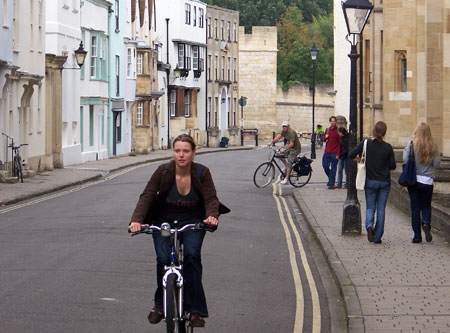One of the difficulties facing any cyclist is finding enough time to train, prepare and ride. In today’s hectic lifestyle it is pretty tough to devote 15 hours a week to cycling.
Cycling can be a time intensive sport. In winter it can take a good 30 minutes to get all the winter clothes on, prepare the bike and then clean it after a muddy ride through country lanes. If you want to do any distance – be it sportives, road races or medium distance time trialling you need to spend a certain amount of time on the bike. You really need to do at least one 3 to 4 hour ride a week. Even if you train very efficiently and train at high intensity, you still need to find time for 4 -5 training rides. A good cyclist will want to spend 10 – 15 hours a week on the bike. Then, on top of that, you have all the time in preparation / cleaning your bike and getting ready. – If you have a full time job it’s a pretty big chunk out of your free time.
What can we Do to Maximise The Efficiency of our Training time?
1. Commute.
Commuting by bike rather than the car or train can effectively ‘creates time’ for training. Not only do we get to work by bike and save money, but, we can get some training in whilst getting to work. If you are a really serious cyclist, you might actually plan the place where you live to be a suitable distance from your place of work. The disadvantage of training on a commute is that:
- You will be sweaty on arrival at work.
- Your journey probably involves many junctions and lights not suitable for consistent training
- If you live a long way from work and rely on your bike, you can become overly tired or struggle when weather is really bad or when you are ill.
However, commuting can be an excellent way of getting some base miles in. These factors make it much better:
- If you have somewhere to change at work, it becomes much better because then you don’t have to worry about being sweaty all day
- The route into work is reasonably safe / conducive to cyclists.
2. Turbo Training.
Many modern training manuals stress the importance of ‘quality’ over quantity. In other words, it’s not the hours we spend on the bike, but, what we do when we are on it. Even short training sessions of 30-60 mins, can be effective in increasing our fitness / speed, if we are training at the right power / intensity / heart rate. Turbo trainers make it more efficient to train in the right target zones because we can just jump on and get to the right target zone. Turbo trainers need less maintenance and we can avoid that first 20 minutes of slow riding to get out of a city boundary.
The disadvantage is that it is boring; I find it hard to motivate myself to train on a turbo.
3. Ride with small numbers of similar ability cyclists.
If you cycle for the social aspect, it doesn’t matter if you keep stopping for toasted teacakes e.t.c – that’s often viewed as the best bit anyway. But, if you cycle with a smaller number, there will be less stops for punctures and you will be riding at your target pace.
4. Pedal all the Time.
Some routes you can spend alot of time waiting at red lights or freewheeling downhill / tailwind. If you use a powermeter you can make sure, where possible, you are always maintaining a certain power output.
5. Be Focused in Your Ride.
I often feel that if you are not focused but just amble along with endless thoughts in your mind, then your training is ineffective. It is best to have a target for each training ride, so you do a specific ride rather than just plod along and hope for best. Also whilst cycling you want to be really focuse.
6. Get a Part Time Job / Flexible Hours.
I am fortunate in that my work allows me to choose my hours. I have reduced my hours from 45 hours to 28 hours a week. But, even when I was working a 35 hour week just being able to start 2 hours later on a wednesday morning at 11am was a huge boost to my midweek training – especially in winter when it was dark.


No comments yet.